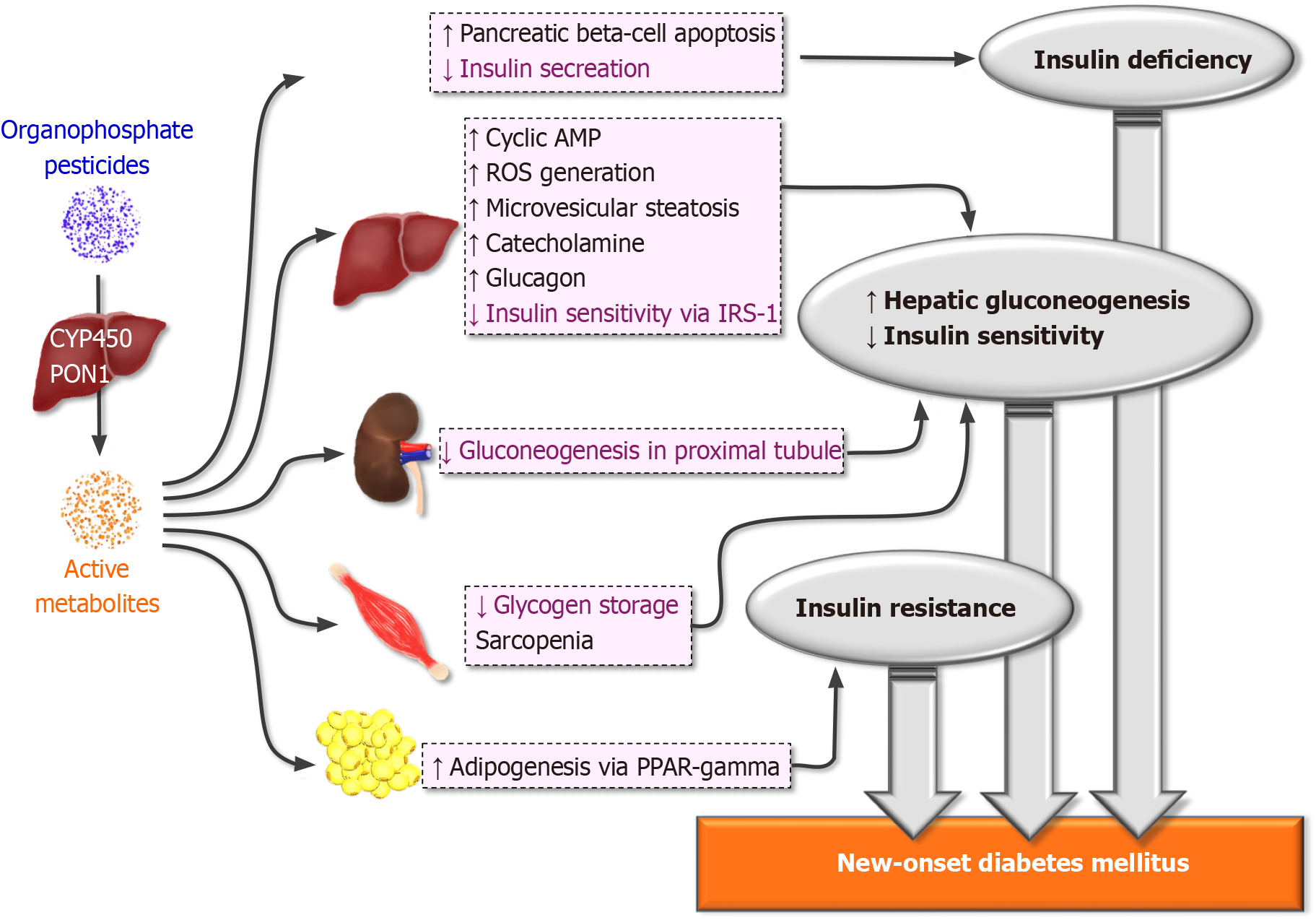Copyright
©The Author(s) 2021.
World J Diabetes. Nov 15, 2021; 12(11): 1818-1831
Published online Nov 15, 2021. doi: 10.4239/wjd.v12.i11.1818
Published online Nov 15, 2021. doi: 10.4239/wjd.v12.i11.1818
Figure 1 Postulated molecular mechanisms of new-onset diabetes mellitus after organophosphate pesticide exposure.
Organophosphate pesticides are metabolized in the liver to toxic derivatives via cytochrome P450 via a first-pass effect. Paroxonase isoform 1 serves as the enzyme handling hydroxylation and cleavage of the toxic form. The active metabolite might induce new-onset diabetes mellitus via pancreatic beta cell damage and disturb the homeostasis of gluconeogenesis and insulin sensitivity. Organophosphates could directly induce apoptosis of pancreatic beta cells by activating nuclear factor-κappa beta, and therefore, insulin secretion may be hampered. Beyond pancreatic cells, gluconeogenesis within the liver could be activated by reactive oxidative species generation and inflammation induced by microvesicular steatosis, enhanced cyclic adenosine monophosphate generation, excessive catecholamine and abated insulin sensitivity of hepatocytes via insulin receptor substrate-1. Distal organ damage by organophosphates may also disturb the homeostasis of gluconeogenesis. In organophosphate-related acute kidney injury, gluconeogenesis within the proximal tubules is disturbed. Decreased proximal gluconeogenesis exacerbates excessive hepatic gluconeogenesis. In skeletal muscle, sarcopenia mediated by intermediate syndrome might reduce glycogen storage within skeletal muscle, which may induce hyperglycemia. Organophosphates also deposit within adipose tissue and therefore exacerbate adipogenesis by activating peroxisome proliferator-activated receptor-gamma. Excessive adipose tissue might enhance insulin resistance and further hasten the development of new-onset diabetes mellitus. CYP450: Cytochrome P450; PON1: Paroxonase isoform 1; ROS: Reactive oxidative species; AMP: Adenosine monophosphate; IRS-1: Insulin receptor substrate-1; PPAR: Peroxisome proliferator-activated receptor.
- Citation: Chung YL, Hou YC, Wang IK, Lu KC, Yen TH. Organophosphate pesticides and new-onset diabetes mellitus: From molecular mechanisms to a possible therapeutic perspective. World J Diabetes 2021; 12(11): 1818-1831
- URL: https://www.wjgnet.com/1948-9358/full/v12/i11/1818.htm
- DOI: https://dx.doi.org/10.4239/wjd.v12.i11.1818













